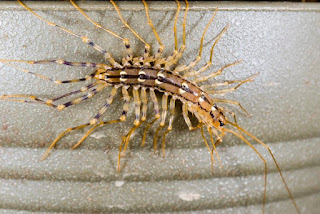Centipedes Show Design and Defy Evolution
There is something about critters such as spiders, rodents, certain insects, centipedes, and other things that give people the heebie jeebies. Part of that is probably due to being startled: Something is in our homes that was not expected, but we suddenly see them on the wall or something.
Most centipedes prefer to remain outside, but the house centipede makes exceptions. My wife calls me to kill them (they are too fast and delicate to catch nicely and take outside). They eat other insects and arachnids that we want removed.
 |
| Flickr / David Levine (CC BY 2.0) |
They are normally found under stones, bark, and logs and other dark, moist areas. But some are found in more challenging places. For example, centipedes commonly inhabit caves, although a few species are what zoologist call true troglobites—those who live their entire life in a cave.
. . .
This new species of centipede was named Geophilus hadesi after Hades, the mythical god of the underworld. It was found in deep vertical caves in central Croatia and is “characterized by relatively elongated trunk segments and appendages, including unusually long claws of the legs.” In fact, “another [centipede] has been observed at an unreachable spot at -1100 m...representing the world’s deepest record of a centipede known to date.”
The full article can be read if you scurry on over to "Centipede Adaptation Is Divinely Engineered".